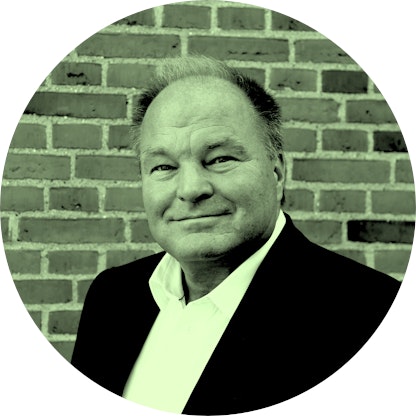Northern Europe’s opportunity to fuel the future
Hydrogen can play a major role in the green transition of heavy-duty transport. Creating a network of partners across northern Europe will help facilitate this technology but we need action from lawmakers now, says Thomas Becker from STRING, a cross-border organisation of cities and regions supporting the development of a hydrogen network
The views expressed are those of the author and do not necessarily reflect the position of FORESIGHT Climate & Energy
Hydrogen corridor can be test bed for heavy-duty transport’s future
Heavy-duty transport is responsible for about 27% of the CO2 emissions from road transport in the European Union. This is expected to increase in the coming years if we continue with business as usual. Luckily, both national governments and the European Union are taking initiatives towards accelerating an overall green transition of the transport sector to cut emissions. The transport sector is the basis of a competitive and interconnected trade system, in turn making heavy-duty vehicles a key player in ensuring the free movement of people, goods and competencies in a sustainable economy. Yet, one of the biggest inhibitors for the transition towards sustainable heavy-duty transport is the lack of an adequate alternative fuel infrastructure accompanied by the need for a reliable and long-term political framework to allocate the necessary investments to alternative fuels solutions. Green hydrogen is one of the solutions among the available alternative fuels for heavy-duty vehicles. Prototype hydrogen refuelling stations and fuel cell vehicles have been completed and are being readied to be used at a larger scale. As such, green hydrogen harbours the opportunity to further the economic success story of the wind industry in Northern Europe. The EU Commission has already highlighted hydrogen fuel cell technology as an element in Europe’s future fuel mix in order to achieve a 60-80% reduction in greenhouse gases by 2050. In addition, when looking at recent estimations, the EU will invest up to €470 billion into hydrogen technology, which is estimated to create up to one million jobs before 2050. But in order to get there, we need to not only show political action but also utilise national and EU investments to implement concrete pilot projects for hydrogen fuel cells that reduce CO2 emissions from freight transport.
HYDROGEN CORRIDOR
Establishing a hydrogen corridor can deploy a minimum of 12 hydrogen-fuelling stations and a fleet of 570 hydrogen-fuelled heavy-duty vehicles stretching from Hamburg via Denmark and West Sweden to Oslo in Norway. The uptake of alternative fuels and electric vehicles is not fast enough, partly due to a lack of recharging or refuelling infrastructure. However, it is difficult to make the case to install such infrastructure when the number of vehicles that would use it remains low. Combining the deployment of stations and vehicles solves the chicken-and-egg dilemma and will enable political vision and private sector expertise to merge in a robust business model. The private sector, spanning along the entire hydrogen value chain, is eager to participate. The Organisation for Economic Co-operation and Development (OECD) has identified the STRING area as an international growth centre, a so-called megaregion, with excellent preconditions for the establishment of a hydrogen corridor. Covering an area of approximately 120,000 square kilometres, STRING has the optimal size for the testing and upscaling of hydrogen technology for transport. This provides the potential for a profitable business case already in the early stage of infrastructure development. The region also hosts high levels of renewable energy production, a large logistics sector and an innovation-friendly environment. This makes the region well-suited to take on a pioneering role in establishing a hydrogen corridor setting the next green milestone of the green transition. The technology is ready but we need political and financial commitment to implement concrete pioneering projects to avoid the cost of inaction.
Do you have a thoughtful response to the opinion expressed here? Do you have an opinion regarding an aspect of the global energy transition you would like to share with other FORESIGHT readers? If so, please send a short pitch of 200 words and a sentence explaining why you are the right person to deliver this opinion to opinion@foresightdk.com.
